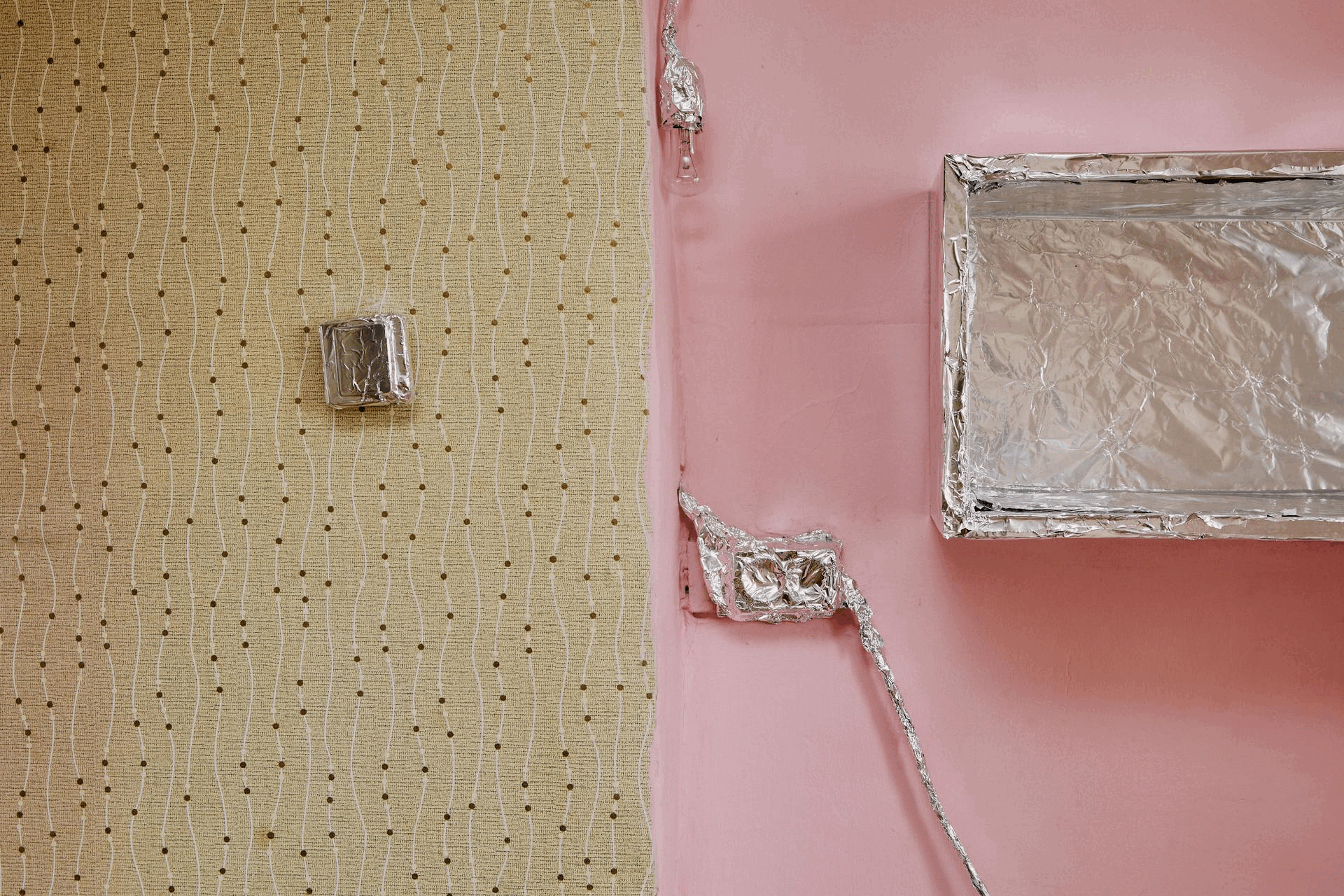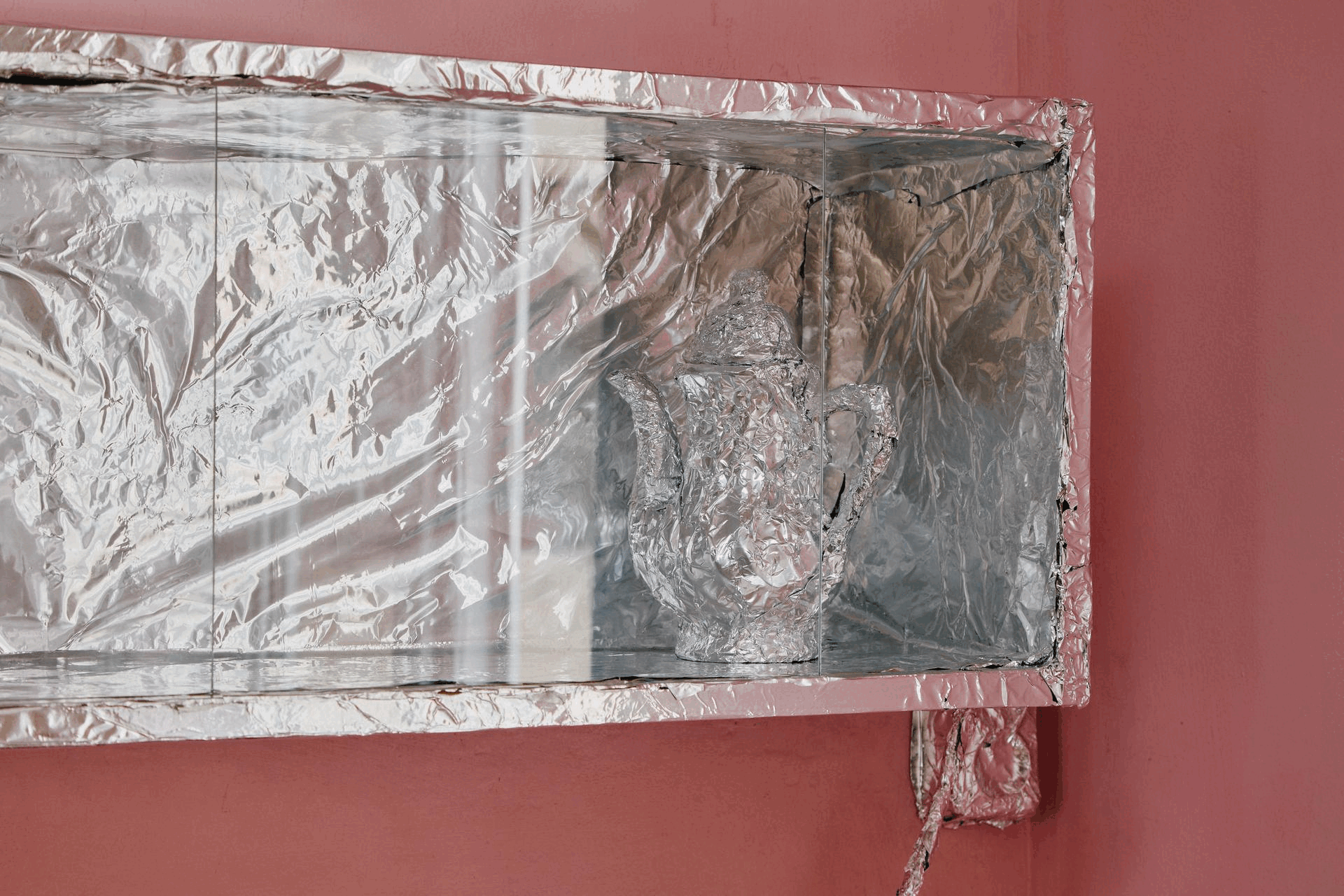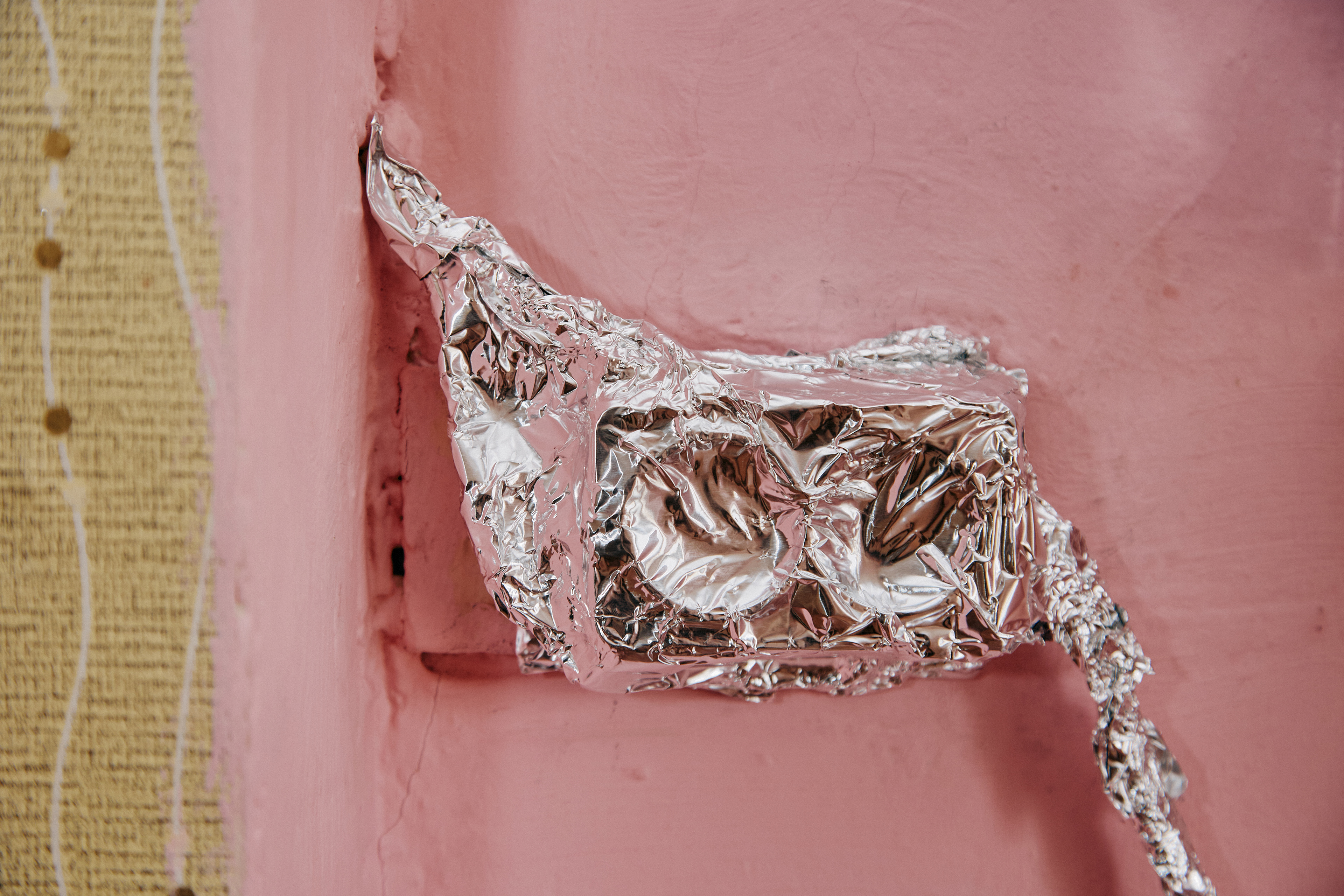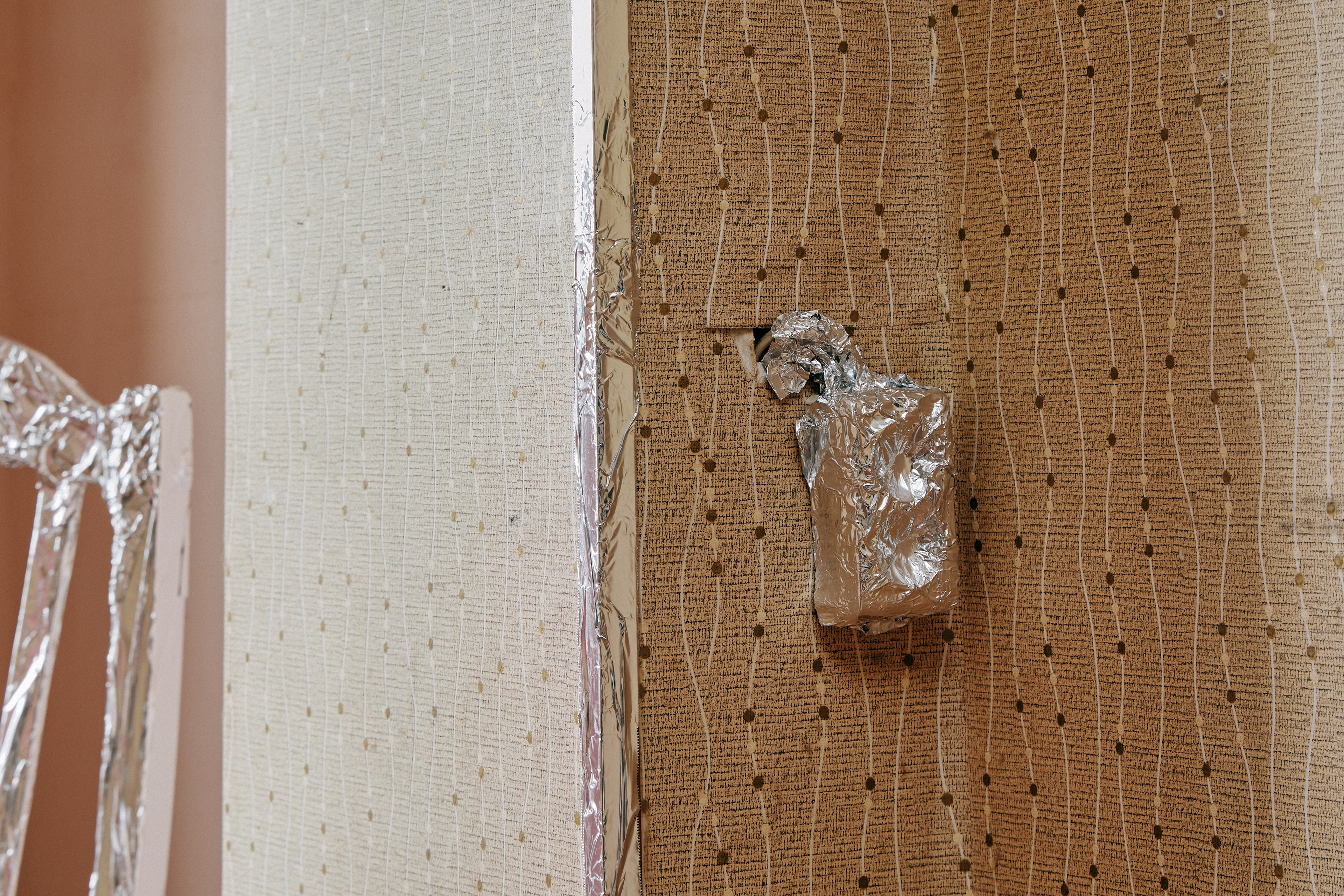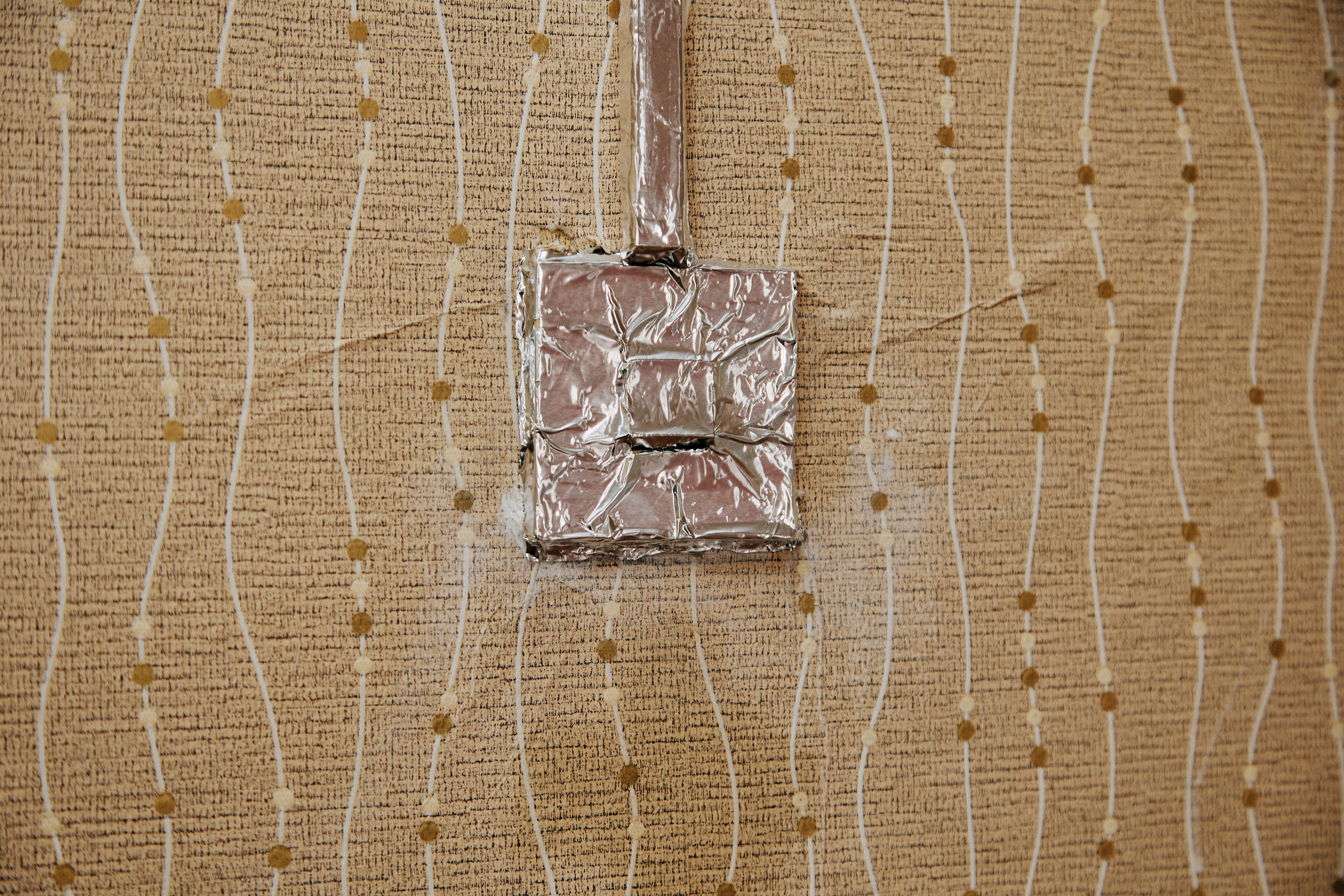“Erased Objects” was part of the exhibition “(Im)Permanent Circumstances”, organized by Tbilisi Collective and the Tbilisi Architecture Biennial. The exhibition took place at Sanatorium “Kartli,” near the Tbilisi Sea, as part of the Biennial’s third edition, which explored the theme of temporality. “Kartli,” originally a sanatorium, became a temporary shelter for people displaced from Abkhazia and has served as their home for over 30 years. Today, the residents face renewed displacement, as the process of securing permanent housing remains unresolved.
The installation was based on a process of exploring the building together with its residents. It was striking to observe how people leave behind traces - physical volumes - of their lives, even in spaces that were never meant to be permanent. Over time, temporary housing becomes personalized. Families build their homes with their own hands, adjusting the space to suit their needs. But when they leave, they take what they can carry and often leave behind objects - either because they’re too large to move, too worn to be useful, or simply no longer meaningful.
“Erased Objects” focused on this in-between space - on the items left behind, both small and large. The room became a collection of what remained: objects once used daily, now abandoned. Some were light and easy to carry, yet still left behind; others were too large or too embedded in the space to be moved. Over time, these objects stopped being furniture and became part of the architecture - shaping the room itself.
The idea was to remove all visible material and character from the objects, using reflective foil to cover every surface. This material unified the room visually, erasing individual identities of the objects while emphasizing their physical presence. By doing this, the installation highlighted the volume and form of the leftovers, rather than their function or history. Familiar items - a table, cabinets, a light fixture - became abstract elements. What used to be part of everyday life was now part of the structure, integrated into the walls and space.
This gesture also reflected the tension between permanence and temporality. Although the shelter was never meant to be a permanent home, people lived there for decades, creating personal spaces within an institutional setting. The installation became a reflection on how everyday life leaves a mark, and how that mark can remain even after people have moved on. Those objects will go down with the building, they will break as contractors start demolishing the structure that once held so many lives. What remains is a visual memory of presence and absence, of lives lived in a place that was never truly chosen, but eventually transformed into home.
Tbilisi Architecture Biennial 2022 - "What's Next?" [Team] & [Exhibition Page]
